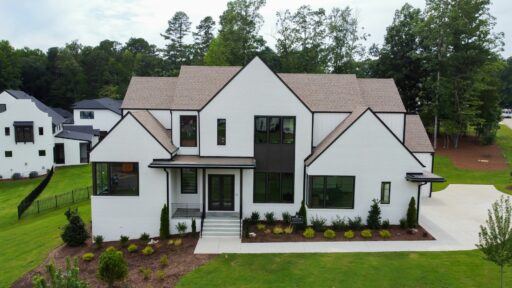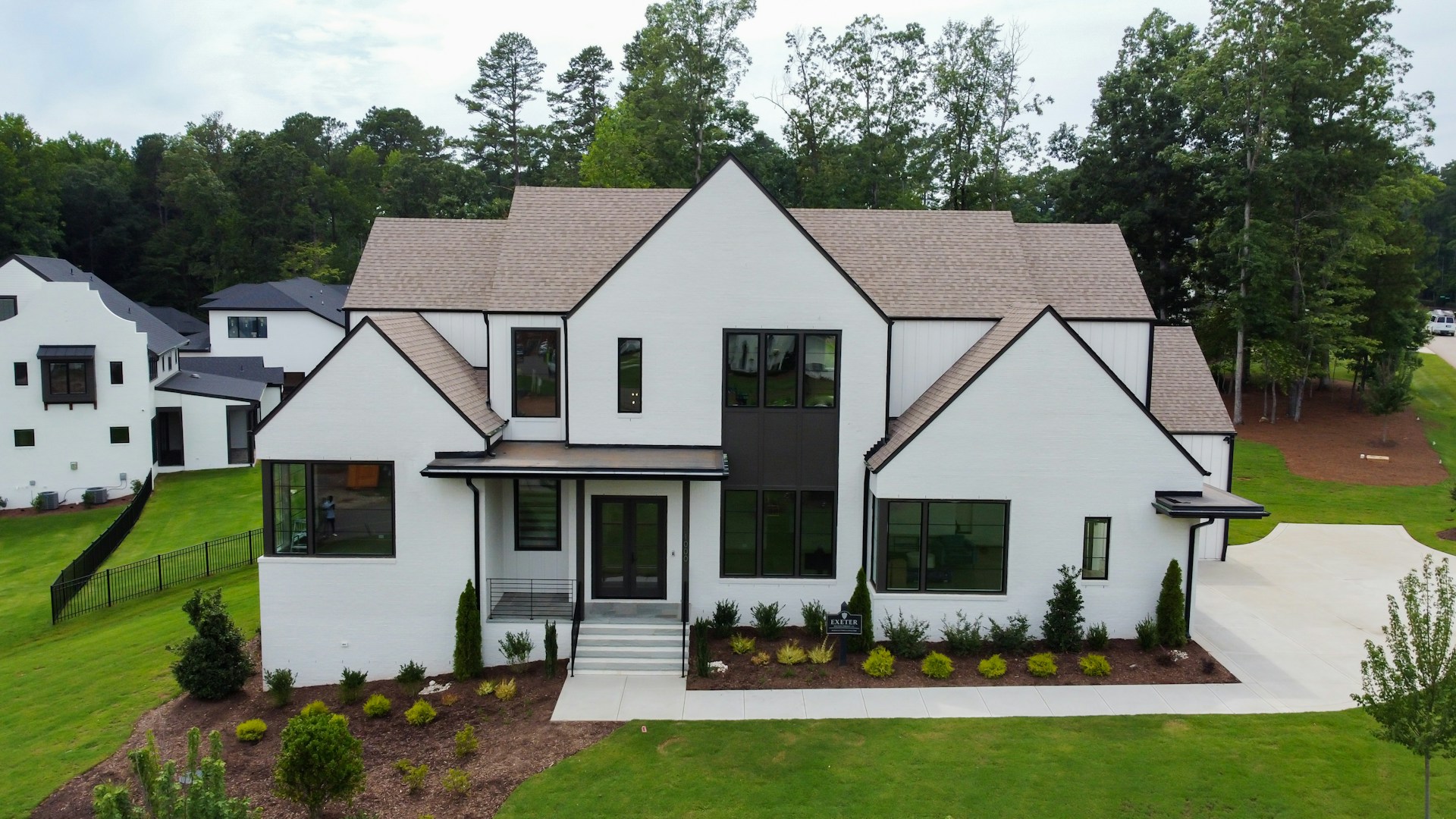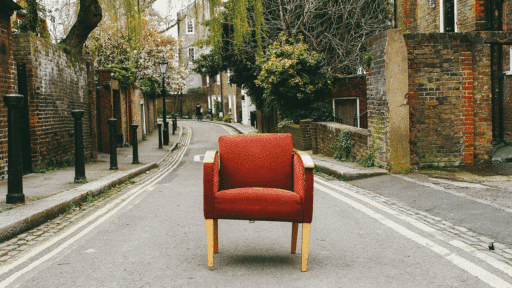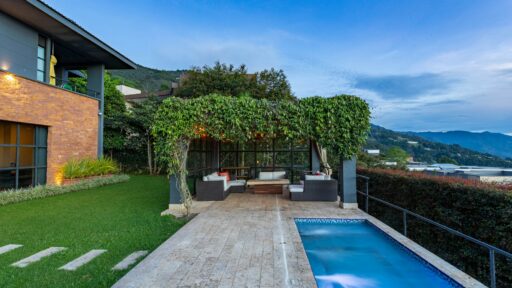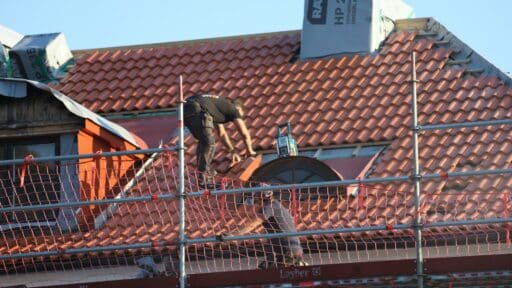Tired of cookie-cutter homes that don’t fit your family or lifestyle?
This step-by-step guide shows you how to turn your vision into a home that works exactly the way you live—where breakfast isn’t a scramble, kids have their own corners, and every upgrade is worth it.
From planning to move-in, you’ll learn how to build a home that truly fits your life and future.
Just keep reading.
Step 1: Vision and Planning
Building a dream custom home starts way before a floor plan. It starts with taking a moment and imagining your daily life in this new home.
- How do mornings look?
- Are you brewing coffee in a sunlit kitchen while kids grab breakfast at the island, or do you crave a quiet nook where you can work before anyone wakes?
- Do you need a home office that doubles as a creative space, or is that bonus room really just going to be storage?
- What’s your must-have vs. nice-to-have? Maybe you can’t live without four bedrooms, a walk-in pantry, and a big backyard—but what about the wine fridge or the reading loft?
Write it all down, and then prioritize what affects daily life most.
Oh, and should you ever get stuck in this process, Evergreene Homes has plenty of ideas and resources to help you see what’s feasible, suggest alternatives when something stretches the budget, and keep your lifestyle front and center.
Step 2: Choosing Your Floor Plan
Now that you know what your dream home needs, it’s time to match it with the right floor plan.
Ask yourself: Do I want a home that sits tucked into a quiet neighborhood, or do I prefer a little more privacy on my own land? How important is a flowing open-concept layout versus separate rooms for work, play, and relaxation?
In our experience, semi-custom plans give you the most flexibility without the overwhelm of designing from scratch. (And yes, these tweaks usually won’t derail the project if you plan early!)
Also, if you already own land, think about orientation, views, and yard space. And if you’re unsure what’s best for the lot and keeping your design cohesive, builders can walk you through that too!
Step 3: Budgeting
It’s time to talk money. For starters, your base price.
Think beyond square footage—consider the number of bedrooms and bathrooms you truly need, the style of finishes you prefer, and the lot’s location.
Getting this right upfront gives you a solid foundation for layering in upgrades, landscaping, and extras that make the house feel truly yours. (This is where those must-haves vs. nice-to-haves from Step #1 really pay off!)
Once you’ve done this, it’s time to look into financing.
Mortgages, construction loans, leasing options, or builder-preferred lender programs—they all have pros and cons, and knowing your options early keeps surprises low.
A good builder will guide you, showing what fits your budget and timeline, and helping you see how upgrades, lot choices, and finishes impact your overall plan.
Step 4: Design and Customization
Now comes the fun part, and that is making the house yours.
Some people go big with statement kitchens or spa bathrooms. Others focus on details that matter every day—like built-in storage in the mudroom, a quiet home office tucked away from the main living space, or a play nook where kids can be kids without taking over the house.
What is it that you’re after?
Are you drawn to a trendy, Instagram-worthy home with floating shelves, bold color palettes, and open-concept living that’s all the rage in 2025?
Or are you thinking long-term, investing in energy-efficient windows, smart thermostats, and LED lighting that save money, cut stress, and make daily life easier for years to come?
Whatever it is, builders can help you weave it all together so your home feels cohesive, functional, and timeless—just like you dreamed of it being.
Step 5: Building, Watching, and Moving In
You’ve reached the last step: Construction.
It can feel fast and a little chaotic—but it doesn’t have to. The trick is staying involved without letting it take over your life.
Walk through progress when you can, flag anything that feels off, and keep an eye on the key milestones. Delays and tweaks are normal, but a clear process keeps surprises to a minimum.
After construction is done, then comes the final walkthrough, room by room.
This is your chance to cross off the punch list, make sure finishes match your vision, and spot the small touches that turn a house into your home.
By the time you move in, you’ll not only have completed a project but also built a space that works for how you live, fits your family, and feels effortless.
The Step-by-Step Process of Building Your Dream Custom Home
Tired of cookie-cutter homes that don’t fit your family or lifestyle?
This step-by-step guide shows you how to turn your vision into a home that works exactly the way you live—where breakfast isn’t a scramble, kids have their own corners, and every upgrade is worth it.
From planning to move-in, you’ll learn how to build a home that truly fits your life and future.
Just keep reading.
Step 1: Vision and Planning
Building a dream custom home starts way before a floor plan. It starts with taking a moment and imagining your daily life in this new home.
- How do mornings look?
- Are you brewing coffee in a sunlit kitchen while kids grab breakfast at the island, or do you crave a quiet nook where you can work before anyone wakes?
- Do you need a home office that doubles as a creative space, or is that bonus room really just going to be storage?
- What’s your must-have vs. nice-to-have? Maybe you can’t live without four bedrooms, a walk-in pantry, and a big backyard—but what about the wine fridge or the reading loft?
Write it all down, and then prioritize what affects daily life most.
Oh, and should you ever get stuck in this process, Evergreene Homes has plenty of ideas and resources to help you see what’s feasible, suggest alternatives when something stretches the budget, and keep your lifestyle front and center.
Step 2: Choosing Your Floor Plan
Now that you know what your dream home needs, it’s time to match it with the right floor plan.
Ask yourself: Do I want a home that sits tucked into a quiet neighborhood, or do I prefer a little more privacy on my own land? How important is a flowing open-concept layout versus separate rooms for work, play, and relaxation?
In our experience, semi-custom plans give you the most flexibility without the overwhelm of designing from scratch. (And yes, these tweaks usually won’t derail the project if you plan early!)
Also, if you already own land, think about orientation, views, and yard space. And if you’re unsure what’s best for the lot and keeping your design cohesive, builders can walk you through that too!
Step 3: Budgeting
It’s time to talk money. For starters, your base price.
Think beyond square footage—consider the number of bedrooms and bathrooms you truly need, the style of finishes you prefer, and the lot’s location.
Getting this right upfront gives you a solid foundation for layering in upgrades, landscaping, and extras that make the house feel truly yours. (This is where those must-haves vs. nice-to-haves from Step #1 really pay off!)
Once you’ve done this, it’s time to look into financing.
Mortgages, construction loans, leasing options, or builder-preferred lender programs—they all have pros and cons, and knowing your options early keeps surprises low.
A good builder will guide you, showing what fits your budget and timeline, and helping you see how upgrades, lot choices, and finishes impact your overall plan.
Step 4: Design and Customization
Now comes the fun part, and that is making the house yours.
Some people go big with statement kitchens or spa bathrooms. Others focus on details that matter every day—like built-in storage in the mudroom, a quiet home office tucked away from the main living space, or a play nook where kids can be kids without taking over the house.
What is it that you’re after?
Are you drawn to a trendy, Instagram-worthy home with floating shelves, bold color palettes, and open-concept living that’s all the rage in 2025?
Or are you thinking long-term, investing in energy-efficient windows, smart thermostats, and LED lighting that save money, cut stress, and make daily life easier for years to come?
Whatever it is, builders can help you weave it all together so your home feels cohesive, functional, and timeless—just like you dreamed of it being.
Step 5: Building, Watching, and Moving In
You’ve reached the last step: Construction.
It can feel fast and a little chaotic—but it doesn’t have to. The trick is staying involved without letting it take over your life.
Walk through progress when you can, flag anything that feels off, and keep an eye on the key milestones. Delays and tweaks are normal, but a clear process keeps surprises to a minimum.
After construction is done, then comes the final walkthrough, room by room.
This is your chance to cross off the punch list, make sure finishes match your vision, and spot the small touches that turn a house into your home.
By the time you move in, you’ll not only have completed a project but also built a space that works for how you live, fits your family, and feels effortless.

